To What Can the Parable Be Compared? Parables and Fables in the Graeco-Roman World
In many sources from the ancient world, comparisons or analogies, often in the form of short narratives, are used to tell a larger story, to develop an argument, to demonstrate a moral lesson, or to have a humorous effect. Well-known are the fables from the Aesopic tradition, which can be found in a wide variety of ancient sources (see Van Dijk, 1997, 121-382). Such short narrative analogies are also found in early Jewish and Christian sources in the form of parables. The descriptions of the life of Jesus in the various gospels show that he communicated his message about the kingdom of God using such short stories, like that of a mustard seed growing into a large plant or tenants of a vineyard refusing to turn over the produce to its owner. Similar stories are found in later rabbinic literature, where they are often used to interpret the text of Scripture. In order to broaden our understanding of the literary genres of parables, fables, and similes and their relation to each other within the context of the Graeco-Roman world, the research project ‘Parables and the Partings of the Ways’ has hosted a one-day symposium during which this topic has been addressed by respected scholars from the fields of Classics, New Testament Studies, and Rabbinics.
When the parables and fables are further examined some striking similarities can sometimes be found. First of all the terminology used in the New Testament and classical sources is very similar. Aristotle, in his Rhetoric, mentions two types of fictional examples which a speaker can use to persuade his audience, namely the parable (παραβολή) and the fable (λόγος). But there are more similarities, which can easily be seen in the following examples (quoted from Snodgrass, 2008, 236-240):
Philo, De Deo 91: “On the one hand, it is a common experience that things befall us of which we have not even dreamt, like the story of the husbandman who, digging his orchard to plant some fruit-trees, lighted on a treasure, and thus met with prosperity beyond his hopes.”
Horace, Satires 2.6.10: “O that some lucky strike would disclose to me a pot of money, like the man who, having found a treasure-trove, bought and ploughed the self-same ground that he used to work on hire, enriched by favor of Hercules.”
Matthew 13:44 (NRSV): “The kingdom of heaven is like treasure hidden in a field, which someone found and hid; then in his joy he goes and sells all that he has and buys that field.”
Gospel of Thomas 109: “Jesus said: The kingdom is like a man who had a treasure [hidden] in his field, without knowing it. And [after] he died, he left it to his [son. The] son knew nothing (about it). He accepted that field (and) sold [it]. And he who bought it came, (and) while he was ploughing [he found] the treasure. He began to lend money at interest to [whomever] he wished.”
Mekhilta Beshallach 2.149-155 (on Exodus 14:5): “Another interpretation: R. Simon the son of Yochai, giving a parable, says: To what can this be compared? To a man to whom there had fallen as an inheritance a residence in a far-off country which he sold for a trifle. The buyer, however, went and discovered in it hidden treasures and stores of silver and of gold, precious stones and pearls. The seller, seeing this, began to choke with grief. So also did the Egyptians, who let go without realizing what they had let go. For it is written: ‘And they said: What is this we have done that we have let Israel go’.”
Aesop’s Fables 42: “A farmer who was about to die wanted his sons to be knowledgeable about the farm, so he summoned them and said, ‘My children, there is a treasure buried in one of my vineyards.’ After he died, his sons took plows and mattocks and dug up the entire farm. They did not find any treasure, but the vineyard paid them back with a greatly increased harvest. Thus they learned that man’s greatest treasure consists in work.”
The brief stories cited above all contain the same motif of a treasure hidden in a piece of land (or a house) and more examples could be added (see also Crossan, 1976 and Crossan, 2008). The shared motif is developed in a number of similar but slightly different plots. Not only are there some variations in the plot, but also in the applications of the stories. In Horace and Matthew, a man finds a treasure and buys the field in which it is hidden, although both have a different emphasis. Philo also has a person working in the field and finding a treasure unexpectedly. In the context, the story is applied to finding the wisdom of God. The Gospel of Thomas and the Mekhilta add the element that the owner of a property is not aware of the presence of a hidden treasure and a buyer finding it. The combination with the motif of father and son is also present in the Aesopic fable, which, however, has a clever twist with regard to the treasure. Here the real hidden treasure is not what one would expect from the other narratives. The motif of hidden treasure was apparently so common in the ancient world, that the fable can use it to surprise its hearers or readers.
There are many other motifs found in Jewish, Christian, and Graeco-Roman sources, which are similar to each other, for example, a fisherman catching fish (see this blog), a father and his sons (see the examples above and Rau, 1990). Furthermore, most of the stories mentioned above have a similar structure in which a short story is connected to an application. These similarities in motifs, characters, and structures found in short narratives from many different sources from the ancient world are very relevant for the interpretation of the parables. It raises issues about the social and historical background of the genre of parables and their place within the broader cultural context of the ancient world. With which texts from Greek and Roman literature can early Christian and rabbinic parables be compared? How does the use of such stories in Greek and Roman sources relate to parable-telling in the Jewish and early Christian contexts? How can a comparison of these stories in different sources contribute to our understanding of them?
Although it is certainly not the first time that the question is addressed how the parables of Jesus and the rabbis relate to genres in Graeco-Roman sources, it is a topic which has received relatively little attention. Classical scholars rarely consider Jewish and Christian parables when discussing the genres of Greek and Roman narrative and rhetoric. On the other hand, scholars studying these parables often tend to be rather selective when reflecting on the possible connections to Graeco-Roman sources. A brief survey of some contributions to the discussion from the field of New Testament studies may give an indication of what can be gained from integrating the early Jewish and Christian parables into the study of Greek and Roman literary culture.
Modern research of the parables of Jesus began with the publication of Adolf Jülicher’s magnum opus Die Gleichnisreden Jesu. Many of Jülicher’s key insights had a profound influence on the subsequent scholarly study of the parables. One example is his threefold classification of the parables into similitude (Gleichnis im engeren Sinn), parable proper (Parabel im engeren Sinn), and example story (Beispielerzählung). Jülicher based his classification on his reading of classical rhetoric. Referring to sources like Aristotle’s Rhetoric (2.20.1-9), he argued that the narrative parables attributed to Jesus were fables, like those of Stesichorus and Aesop (Jülicher, 1910, 94-101, esp. 98). Subsequent research on the parables accepted many of Jülicher’s conclusions but quickly dismissed his attention to classical literature. Instead, many scholars argued that the parables of Jesus should be understood against the background of the meshalim in the Hebrew Bible and rabbinic literature. Joachim Jeremias, for example, argued that the mashal cannot be classified according to the categories of classical rhetoric, which are foreign to it (Jeremias, 1970, 16). Nevertheless, there have been several scholars since Jülicher who have studied the parables in relation to Greek and Roman literature, although a comprehensive and systematic study is still lacking. From these studies, it is clear that such a comparison is useful to gain a better understanding of the genre, content, function, and transmission of the parables. I will give some brief examples with regard to these different dimensions.
(1) With regard to the genre of the parables, Greek and Roman rhetorical sources are indeed very relevant. Revisiting Jülicher’s reference to classical rhetoric, Ruben Zimmermann, for example, has recently argued that any subcategorization of the genre parable is unwarranted based on the rhetorical treatises of Aristotle and Quintilian (Zimmermann, 2015, 105-150). The study of classical rhetoric has also influenced Zimmermann’s own genre definition, for example, the reference to fictionality as a distinctive feature of the parables (Zimmermann, 2015, 141). Although Zimmermann maintains the Aristotelian distinction between parable (παραβολή) and fable (λόγος), it is interesting that his genre definition is very close to of the fable given by classical scholar Gert Jan van Dijk. Van Dijk surveys ancient theoretical discussions of the fable, including its fictionality, metaphoricity, realism, human and animal characters, and concludes that a fable is a “fictitious, metaphorical narrative” (Van Dijk, 1997, 38-115).
(2) If the genre of the parables can be related to genres in Greek and Roman sources, one also expects similarities in content, like similar characters, motifs and narrative patterns. Indeed, various scholars, like David Flusser, have pointed out such similarities in the parables of Jesus and the rabbis on the one hand, and the Stoic similes of Epictetus or Aesopic fables on the other hand (Flusser, 1981). One example is the motif of hidden treasure, discussed above, which can be found in both parables and fables. Focusing on Aesopic fables “narrating human activities”, Mary Ann Beavis describes five dimensions of similarity between fables and parables, namely narrative structure, content, religious and ethical themes, the presence of an element of surprise or irony, and finally the addition of secondary morals or applications. Based on these similarities, she concludes that the Aesopic fables provide a valid and fruitful context of interpretation for the parables (Beavis, 1990, 473-498, esp. 483).
(3) The study of genre and content is closely connected to questions about function and social setting. Against the background of Graeco-Roman sources, the parables are often seen as a means of persuasion, which are especially at home in the context of popular instruction. Flusser, for example, argued that the similarities in content suggest a common origin in Hellenistic popular philosophy, especially Stoic tradition. From this common background, a distinct parable tradition developed within Judaism, but characteristic for both traditions is the use of imagery taken from everyday life used to establish a common morality (Flusser, 1981, 141-175, esp. 155-156). Beavis, likewise, argues that the similarity to Aesopic fables suggests a specific function and context for the parables. She states that ancient readers and hearers would have expected parables, like fables, to communicate a relatively mundane moral application. The fact that Quintilian, for example, mentions that fables are especially well suited to persuade the simple-minded and uneducated (Institutio Oratoria 5.11.19), is used by Beavis to argue against “excessively complex and sophisticated approaches to [the] interpretation”, which “may misrepresent the impact of the parables on their first hearers” (Beavis, 1990, 495-497). Her criticism is directed against various contemporary, often theologically motivated, readings of the parables as world-shattering experience for their hearers.
(4) Finally, it has been suggested that comparison with Greek and Roman literature may shed light on the transmission and textualization of the parables of Jesus. François Vouga has pointed out similarities between the literary formation of the Aesopic tradition and the parables of Jesus (Vouga, 1992). Although the comparison is problematic with regard to the time span, fables could indeed be adapted to various contexts and purposes. In his discussion of fables in his Progymnasmata, Aelius Theon discusses the ways in which fables can be used in different literary contexts, be elaborated or abridged, and receive various applications starting from different points in the narrative (Theon, Progymnasmata 3, cf. Beavis, 1990, 490-491). Such adaptations can perhaps explain the use of similar parables in different settings within early Jewish and Christian sources.
The brief overview presented here does not pretend to be comprehensive. However, it does suggest that there is much to gain for scholars of early Christianity, Rabbinics, and Classics from a more systematic and comprehensive approach of the parables as a local tradition of specific communities within the context of the broader Graeco-Roman literary tradition. The symposium ‘Parables and Fables in the Graeco-Roman World’ will hopefully contribute to a further exploration of this topic.

Jonathan Pater
Bibliography
Beavis, M.A. (1990). Parable and Fable. The Catholic Biblical Quarterly, 52, 473-498.
Crossan, J.D. (1976). Hidden Treasure Parables in Late Antiquity. In G. MacRae (Ed.), Society of Biblical Literature 1976 Seminar Papers. Missoula: Scholars Press.
Crossan, J.D. (2008). Finding is the First Act. Trove Folktales and Jesus’ Treasure Parable. Eugene: Wipf & Stock.
Van Dijk, G.J. (1997). AINOI, LOGOI, MYTHOI. Fables in Archaic, Classical, and Hellenistic Literature. Leiden: Brill.
Flusser, D. (1981). Die rabbinischen Gleichnisse und der Gleichniserzähler Jesus. Bern: Peter Lang.
Jeremias, J. (1970). Die Gleichnisse Jesu. Göttingen: Vandenboeck & Ruprecht.
Jülicher, A. (1910). Die Gleichnisreden Jesu. Tübingen: J.C.B. Mohr.
Rau, E. (1990). Reden in Vollmacht. Hintergrund, Form und Anliegen der Gleichnisse Jesu. Göttingen: Vandenhoeck & Ruprecht.
Snodgrass, K.R. (2008). Stories with Intent. A Comprehensive Guide to the Parables of Jesus. Grand Rapids: Eerdmans.
Vouga, F. (1992). Formgeschichtliche Überlegungen zu den Gleichnissen und zu den Fabeln der Jesus-Tradition auf dem Hintergrund der hellenistischen Literaturgeschichte. In F. Van Segbroeck, C.M. Tuckett, G. Van Belle, J. Verheyden (Eds.), The Four Gospels 1992 Festschrift Frans Neirynck (173-187). Leuven: Peeters.
Zimmermann, R. (2015). Puzzling the Parables of Jesus. Methods and Interpretation. Minneapolis: Fortress Press.
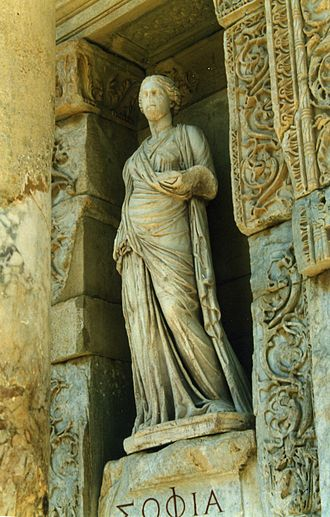
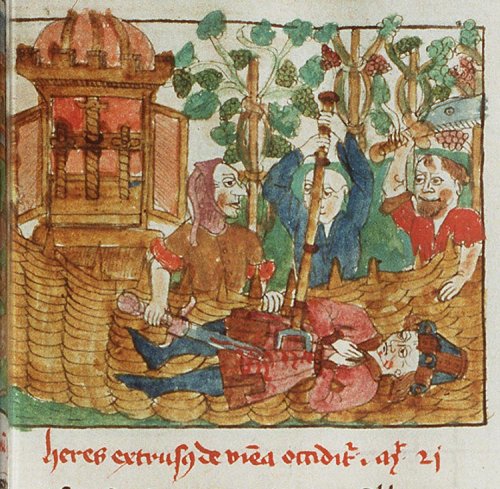


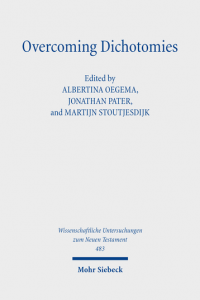
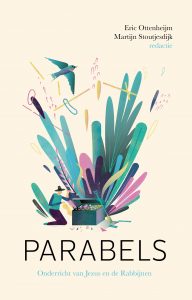
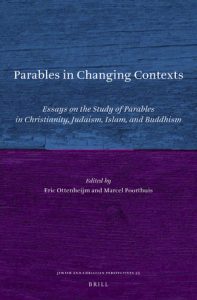
Recente reacties